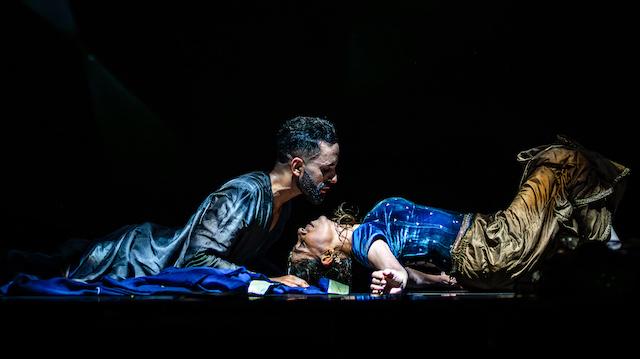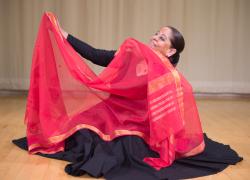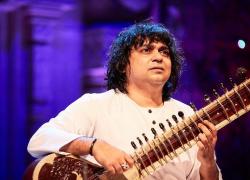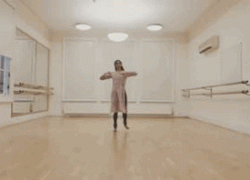MEHEK – Aakash Odedra Company/Aditi Mangaldas Company
MEHEK
Aakash Odedra Company / Aditi Mangaldas Company
Friday 12 April 2024
Sadler’s Wells, London
Reviewed by the Pulse Dance Audience Club
Mehek was a textured experience formed by set, lighting, music and the visual quality as well as flawless dance layered with drums, electronic music and vocals.
The love story between an older woman (danced by Aditi Mangaldas, 64) and a younger man (danced by Aakash Odedra, 38) moved some to tears. Their performances were faultless, whether in dialogue or in synch., each in tune with the other, in joy and in torment. Odedra’s athleticism is extraordinary, with his jumps ever higher. Mangaldas’s dancing is as considerable in terms of skill and eloquence. When she spins at a slower speed than he does, it is appropriate because of the difference between them.
Usually these two dancers are soloists and whereas eroticism comes naturally in the pas de deux of ballet, it is unexpected in kathak. She dances to his heartbeat; and – another surprise – when her outer garment is removed, her sexy laced bodice is revealed. Their lovemaking scene was ‘superb’ and ‘sweet’, fluid and gliding. There is even a tantric moment (though a rather coy veil is drawn over the pair as we cut to the drummers).
However, at the start, the sounds of thunder had threatened a storm. The tender and passionate lovers could not escape what the reflections in the mirrors showed; we thought we could hear a clock ticking; nor could they escape the drums to which they danced. The drummers came to represent forces that would keep the lovers apart. The lighting, the sound and the presence of the figures on the stage contributed to the sense of relentless threat and disapproval. The beam of light sweeping the audience suggested that we too were implicated.
The lighting was dynamic and when it worked, it was ‘perfect’; as with the pool of darkness, in and out of which they danced; or the hands in the horizontal beam. This vivid section was open to different interpretations. Were they the flames of love? Was there a cremation? Had there been a murder? However, while dancing in the dark is carefully orchestrated in hip-hop, here the question was asked ‘why dance in the dark?’
The end was lyrical and compelling, and also ambiguous. Loss, separation and death are part of loving. Was this a dream? Was she in his memory? When she comes back, she’s different, more distant, spiritual. Had she died and gone to heaven? The lovers move in and out of different states and both the beginning and end are very dreamlike. At the end the mirrors were now floating – but they were still there.
A few felt that Mehek was ‘over-produced’ in terms of set and lighting. The set was ‘either magnificent or totally destroyed the atmosphere’ (‘reminiscent of Frank Gehry architecture, and the mobiles like Calder gone mad’). The opening section was felt to be too long, and on occasion the lighting ‘flattened everything’. ‘Sometimes less is more’, with the focus on the beauty of the dance and the storytelling. The dance could have been allowed to speak more for itself.
Production credits:
Choreographers & dancers Aakash Odedra & Aditi Mangaldas; rehearsal director Gaurav Bhatti; composer Nicki Wells; musicians Ashish Gangani, Faraz Ahmed, Hiren Chate & Nicki Wells; lighting designer Fabiana Piccioli; set designer Tina Tzoka; dramaturg Karthika Naïr; production manager Salvatore Scollo.
With thanks to all our contributors to the Club review : Anita Chanda, Robene Dutta, Sanjeevini Dutta, Pippa Nelson, Alia Osman, Shanti Rebello, Charles Robertson, Pury Sharifi, Sue Spencer, Terry Spencer, Patricia Yorke.
Review compiled by Gopa Roy



















